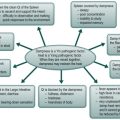CHAPTER OUTLINE
CAUTIONS
< ?merge subdocs = 0 :C:/epub//EPUB0000000002920//output/978-0-7020-3132-8/OEBPS/B9780702031328000116-05.xhtml?>< ?merge subdocs = 0 :C:/epub//EPUB0000000002920//output/978-0-7020-3132-8/OEBPS/B9780702031328000116-06.xhtml?>< ?merge subdocs = 0 :C:/epub//EPUB0000000002920//output/978-0-7020-3132-8/OEBPS/B9780702031328000116-07.xhtml?>< ?merge subdocs = 0 :C:/epub//EPUB0000000002920//output/978-0-7020-3132-8/OEBPS/B9780702031328000116-08.xhtml?>< ?merge subdocs = 0 :C:/epub//EPUB0000000002920//output/978-0-7020-3132-8/OEBPS/B9780702031328000116-09.xhtml?>< ?merge subdocs = 0 :C:/epub//EPUB0000000002920//output/978-0-7020-3132-8/OEBPS/B9780702031328000116-10.xhtml?>< ?merge subdocs = 0 :C:/epub//EPUB0000000002920//output/978-0-7020-3132-8/OEBPS/B9780702031328000116-11.xhtml?>< ?merge subdocs = 0 :C:/epub//EPUB0000000002920//output/978-0-7020-3132-8/OEBPS/B9780702031328000116-12.xhtml?>< ?merge subdocs = 0 :C:/epub//EPUB0000000002920//output/978-0-7020-3132-8/OEBPS/B9780702031328000116-13.xhtml?>< ?merge subdocs = 0 :C:/epub//EPUB0000000002920//output/978-0-7020-3132-8/OEBPS/B9780702031328000116-14.xhtml?>< ?merge subdocs = 0 :C:/epub//EPUB0000000002920//output/978-0-7020-3132-8/OEBPS/B9780702031328000116-15.xhtml?>< ?merge subdocs = 0 :C:/epub//EPUB0000000002920//output/978-0-7020-3132-8/OEBPS/B9780702031328000116-16.xhtml?>< ?merge subdocs = 0 :C:/epub//EPUB0000000002920//output/978-0-7020-3132-8/OEBPS/B9780702031328000116-17.xhtml?>< ?merge subdocs = 0 :C:/epub//EPUB0000000002920//output/978-0-7020-3132-8/OEBPS/B9780702031328000116-18.xhtml?>< ?merge subdocs = 0 :C:/epub//EPUB0000000002920//output/978-0-7020-3132-8/OEBPS/B9780702031328000116-19.xhtml?>< ?merge subdocs = 0 :C:/epub//EPUB0000000002920//output/978-0-7020-3132-8/OEBPS/B9780702031328000116-20.xhtml?>
13. Syndrome of Heart-Yang deficiency
Main symptoms
Secondary symptoms
Tongue
Pulse
Associated disorders in western medicine
Analysis of the syndrome
Treatment principle: Tonify the Heart-Yang, expel the coldness in the chest and promote blood circulation
CAUTIONS
Structure of the formula and selection of herbs
Chief: Tonify the Heart-Yang
Gui Zhi ( Cinnamomi cassiae ramulus) and Zhi Gan Cao ( Glycyrrhizae radix preparata)
Deputy: Stimulate the Yang, regulate the Qi and blood in the chest
Xie Bai ( Allii macrostemi bulbus)
Tan Xiang ( Santali albi lignum)
Chuan Xiong ( Chuanxiong rhizoma)
Assistant: Strengthen the Qi and blood, calm the mind and eliminate the accumulated water
Huang Qi ( Astragali radix) and Dang Gui ( Angelicae sinensis radix)
Long Yan Rou ( Longanae arillus)
Long Gu ( Mastodi fossilium ossis)
Sheng Jiang ( Zingiberis rhizoma recens) and Fu Ling ( Poria)
Common accompanying symptoms and treatment
Examples of classical formulas
Gui Zhi Gan Cao Long Gu Mu Li Tang (Cinnamon Twig, Licorice, Dragon Bone and Oyster Shell Decoction) 
Source: Shang Han Lun 
Analysis of the formula
Commentary on strategies
Shen Fu Tang (Ginseng and Prepared Aconite Decoction) 
Source: Zhong Ti Lei Yao 
Analysis of the formula
Commentary on strategies
Ling Gui Zhu Gan Tang (Poria, Cinnamon Twig, Atractylodes Macrocephalae and Licorice Decoction) 
Source: Jin Kui Yao Lue
Analysis of the formula
Commentary on strategies
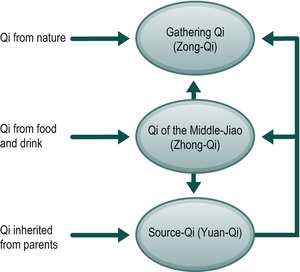 |
| Figure 5.1 •. |
| Qi from origin. |
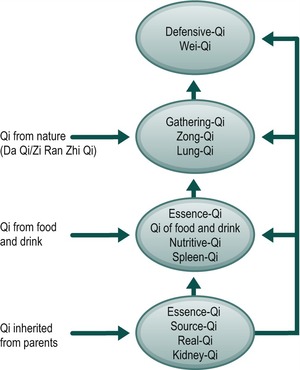 |
| Figure 5.2 •. |
| The nomination of Qi and functions. |
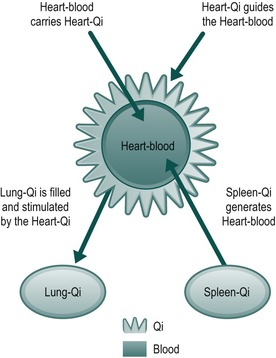 |
| Figure 5.3 •. |
| Relationship between Heart-Qi and blood. Relationship between the Heart, Spleen and Lung. |
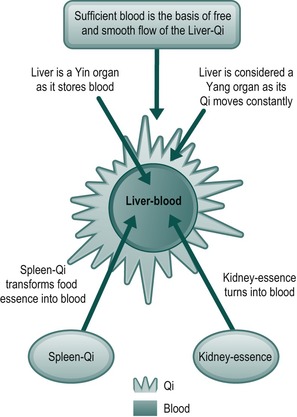 |
| Figure 5.4 •. |
| Relationship between Qi and blood of the Liver; relationship between the Liver, Spleen and Kidney. |
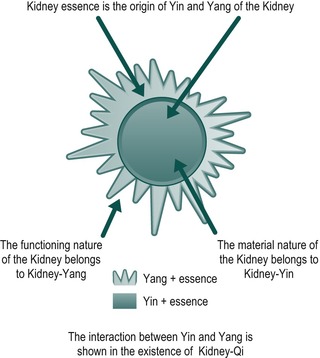 |
| Figure 5.5 •. |
| Relationship between Yin, Yang, Qi and essence of the Kidney. |


